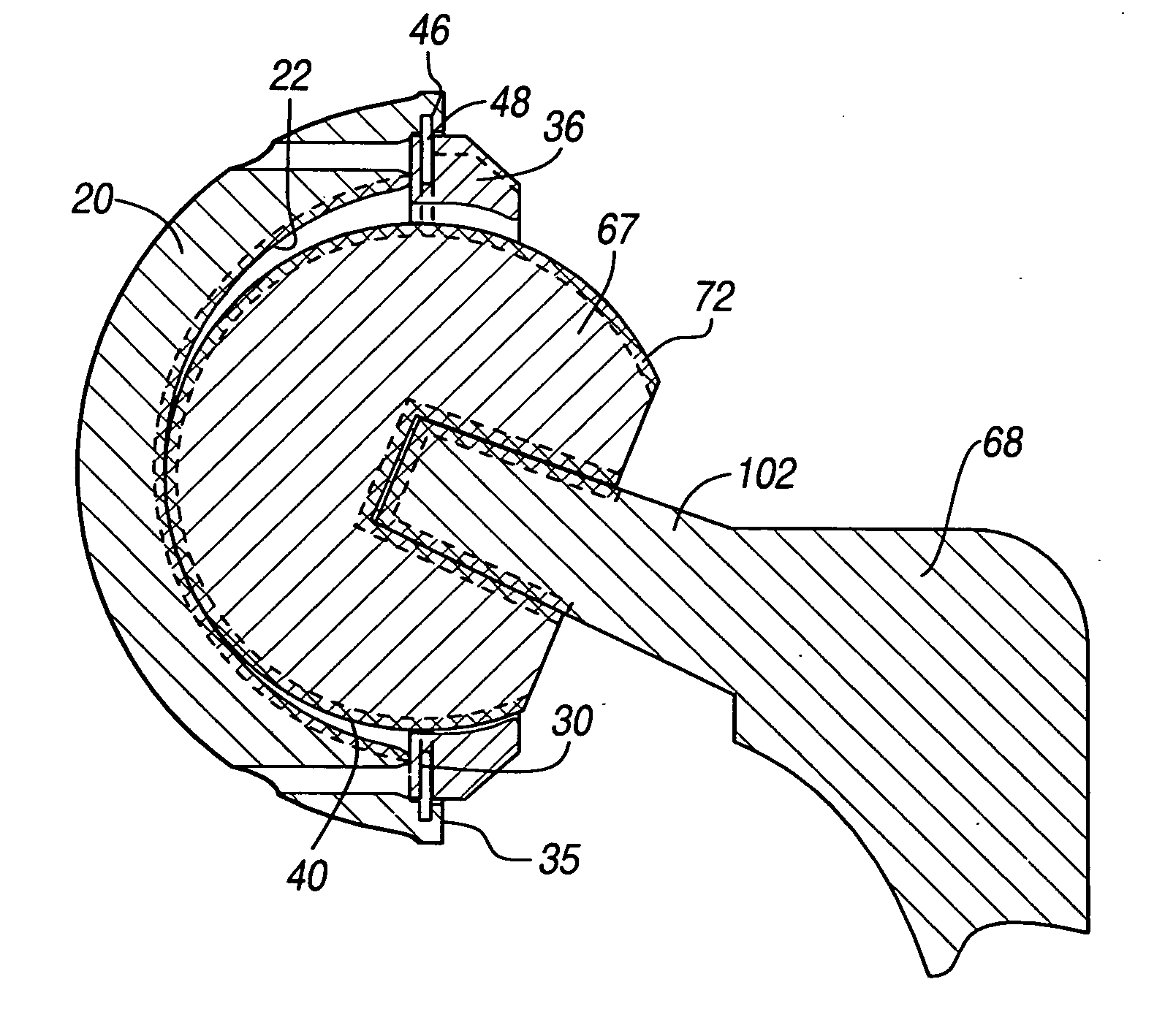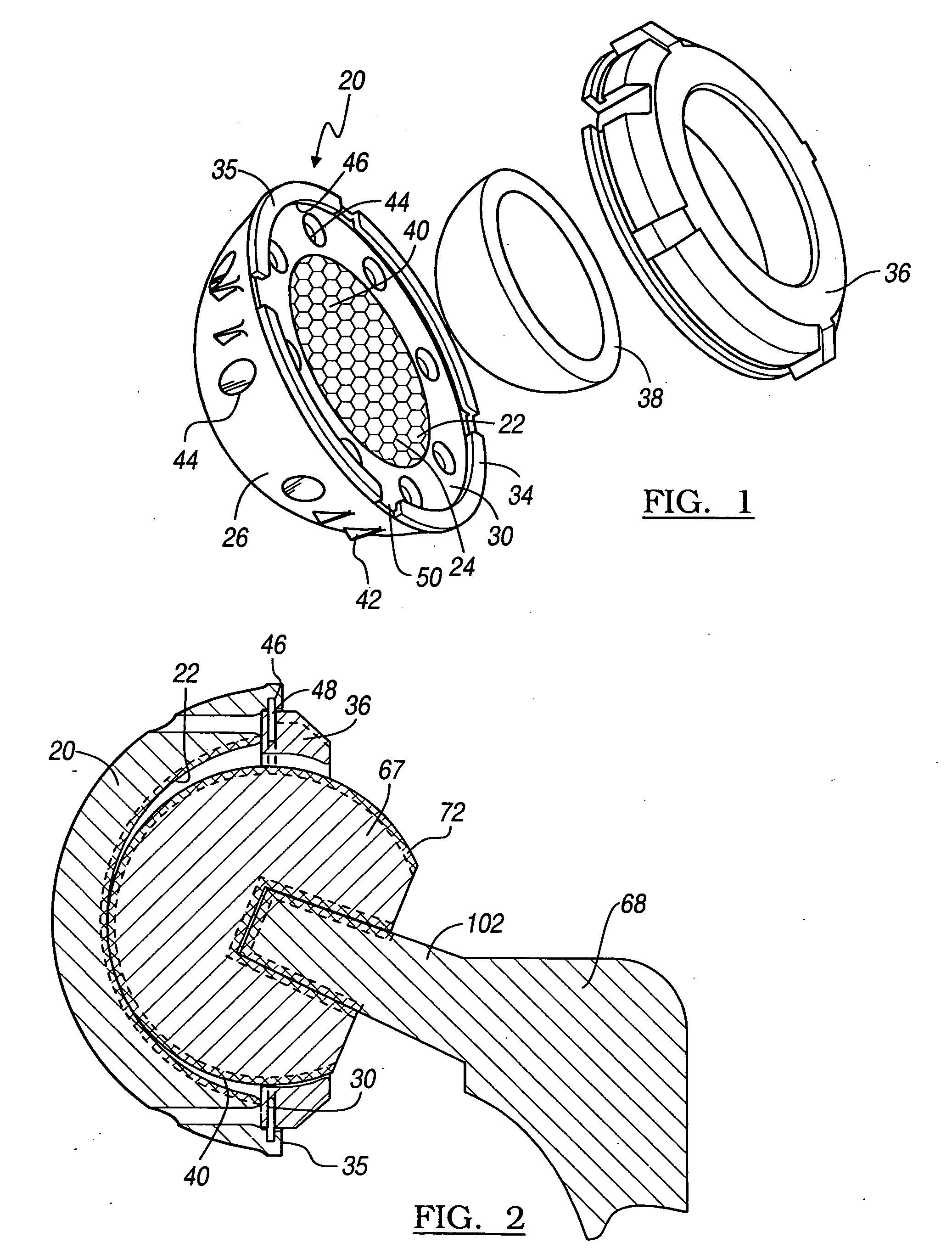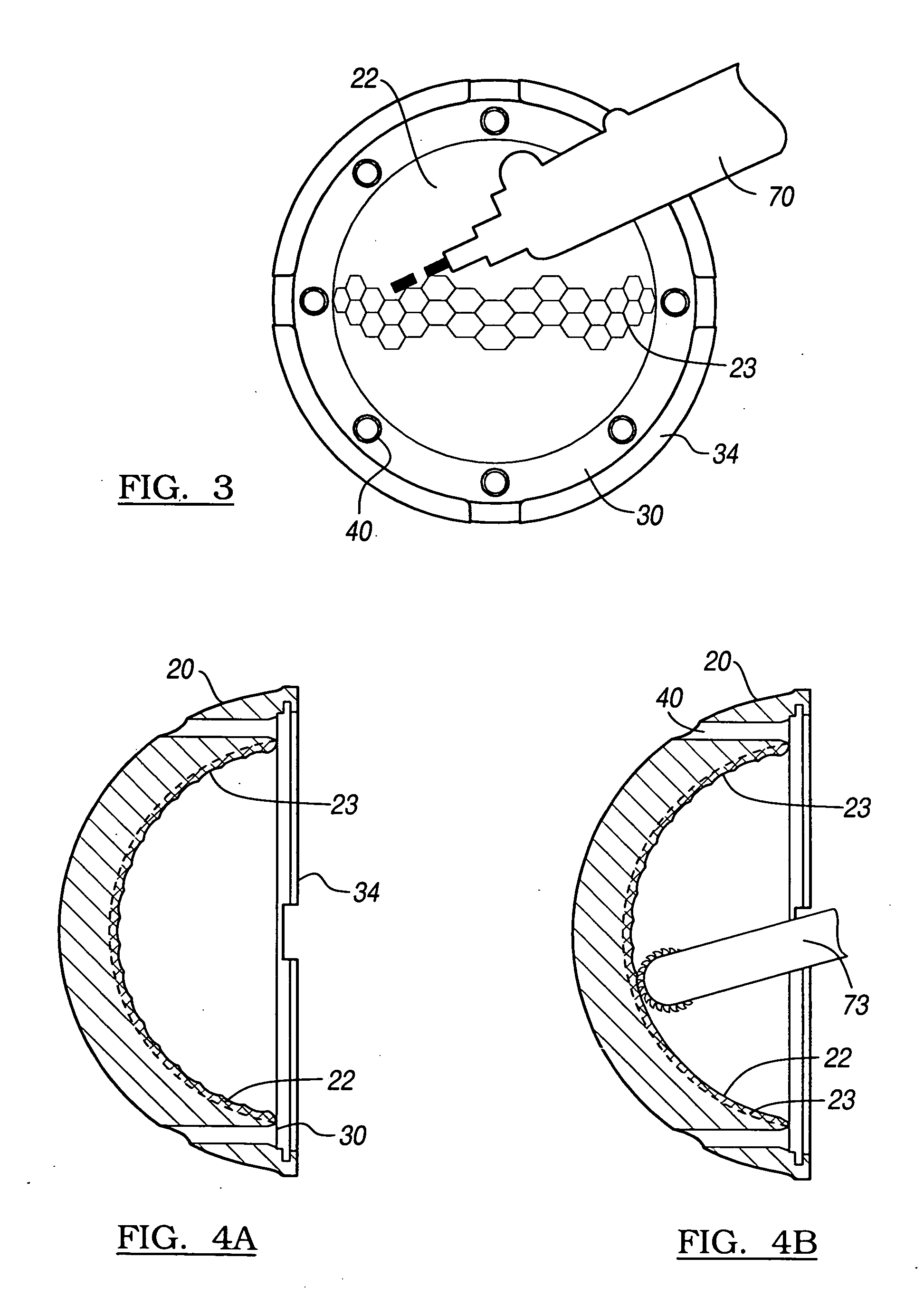Method and apparatus for surface hardening implants
a surface hardening and bearing surface technology, applied in the field of orthopedic implants, can solve the problems of large bone taper, inability to provide full or natural range of motion, and inability to fit into smaller bones
- Summary
- Abstract
- Description
- Claims
- Application Information
AI Technical Summary
Benefits of technology
Problems solved by technology
Method used
Image
Examples
Embodiment Construction
[0020] The following description of the embodiments are merely exemplary in nature and are in no way intended to limit the invention, its application, or uses.
[0021] Referring to FIG. 1, an acetabular prosthesis 20 according to the teachings of a first embodiment of the present invention is shown. The acetabular prosthesis 20 has a inner surface 22 defining a first metal bearing surface 24 and an outer surface 26 capable of being coupled or impacted into a prepared acetabulum. As further descried below, the first metal bearing surface is hardened using a laser peening process. Defined between the outer surface 26 and the inner surface 22 is a peripheral surface or rim 30. Disposed on the peripheral surface 30 is a locking mechanism 34. The locking mechanism 34 is capable of coupling a second prosthetic such as an optional constraining ring 36, or an optional insert bearing 38 into a bearing cavity 40 which is defined by the inner surface 22 of the acetabular prosthesis 20. The opti...
PUM
| Property | Measurement | Unit |
|---|---|---|
| Energy | aaaaa | aaaaa |
| Biocompatibility | aaaaa | aaaaa |
| Residual stress | aaaaa | aaaaa |
Abstract
Description
Claims
Application Information
 Login to View More
Login to View More - R&D
- Intellectual Property
- Life Sciences
- Materials
- Tech Scout
- Unparalleled Data Quality
- Higher Quality Content
- 60% Fewer Hallucinations
Browse by: Latest US Patents, China's latest patents, Technical Efficacy Thesaurus, Application Domain, Technology Topic, Popular Technical Reports.
© 2025 PatSnap. All rights reserved.Legal|Privacy policy|Modern Slavery Act Transparency Statement|Sitemap|About US| Contact US: help@patsnap.com



